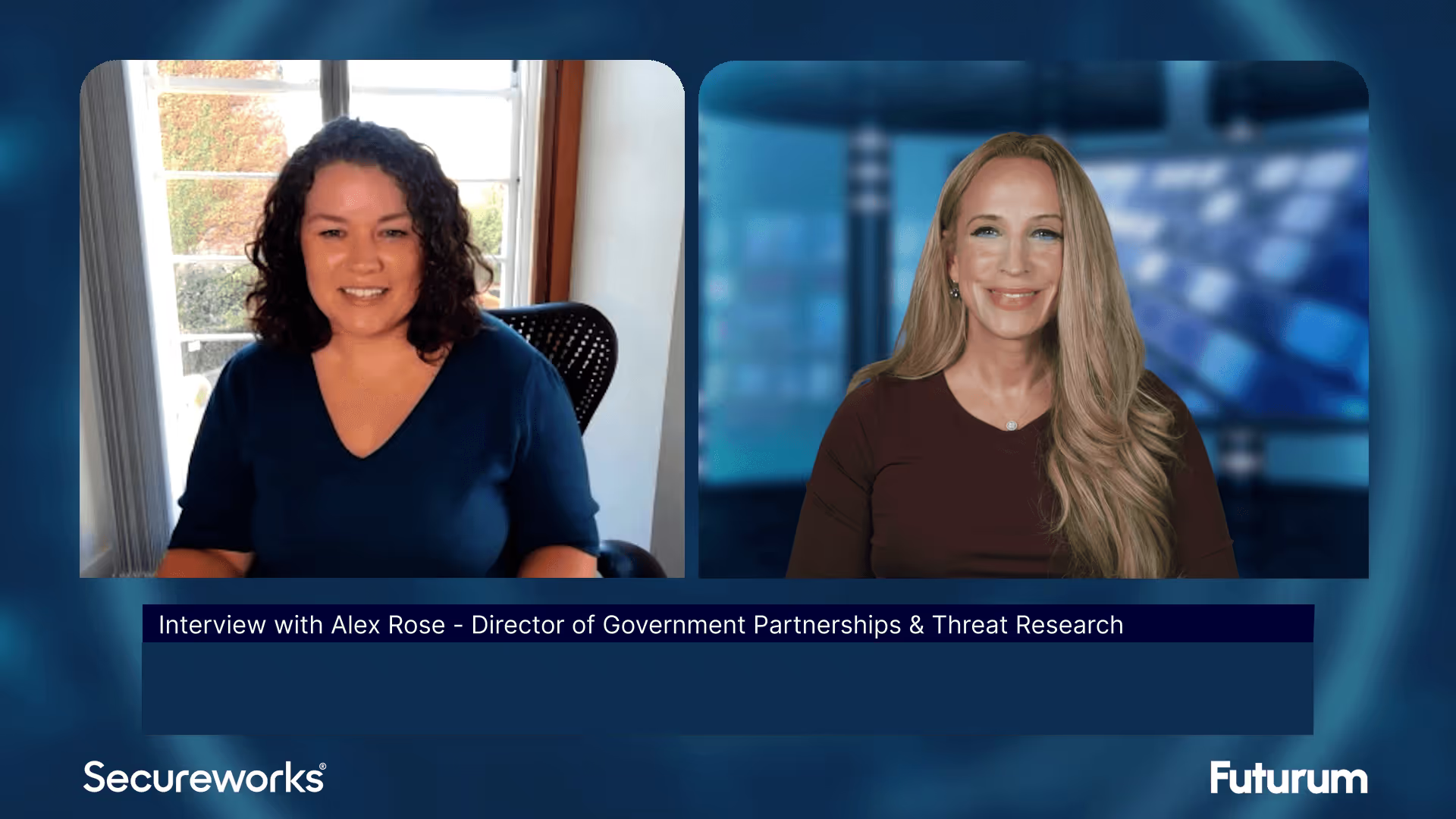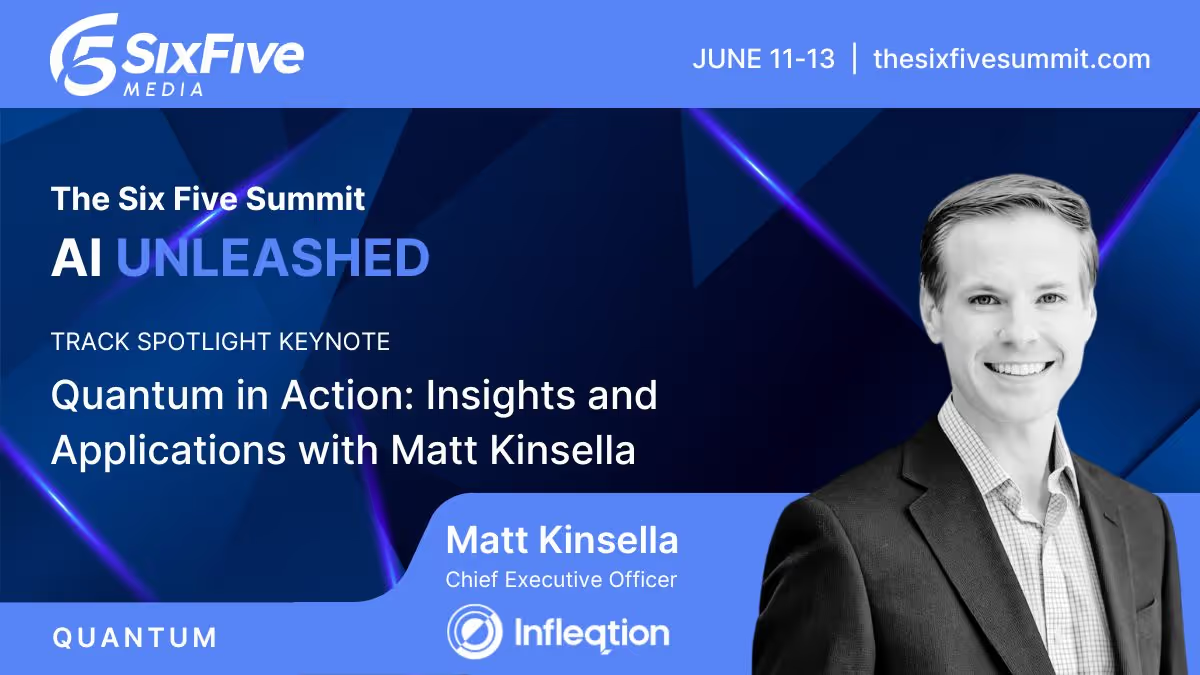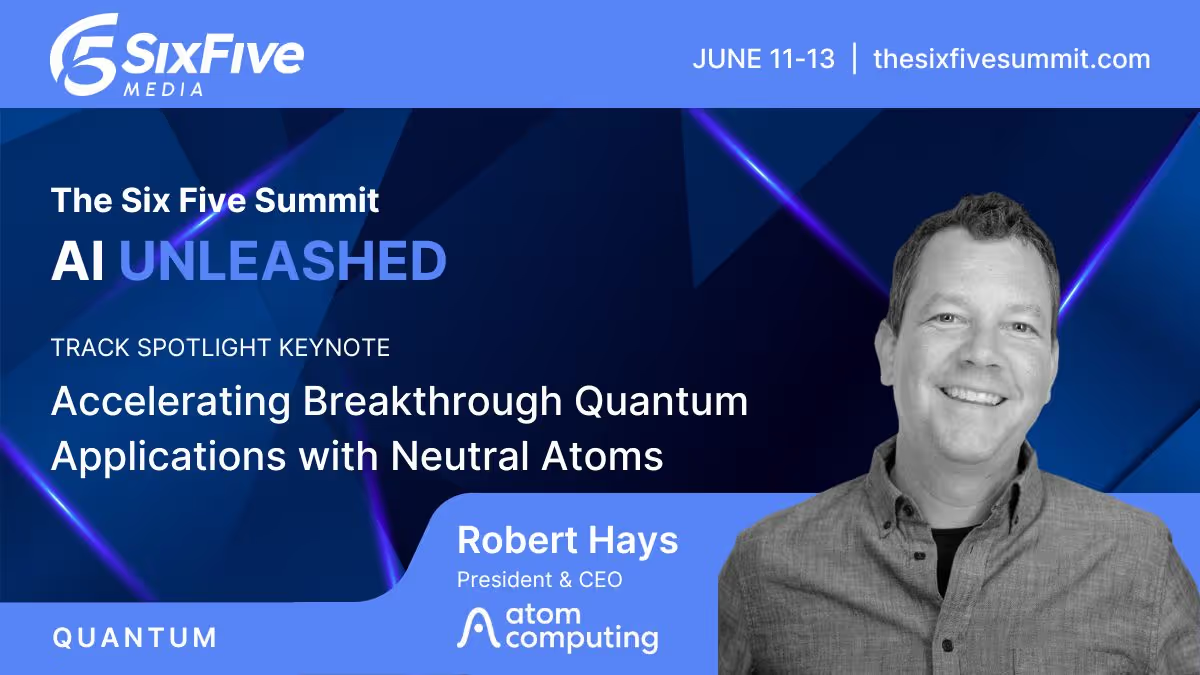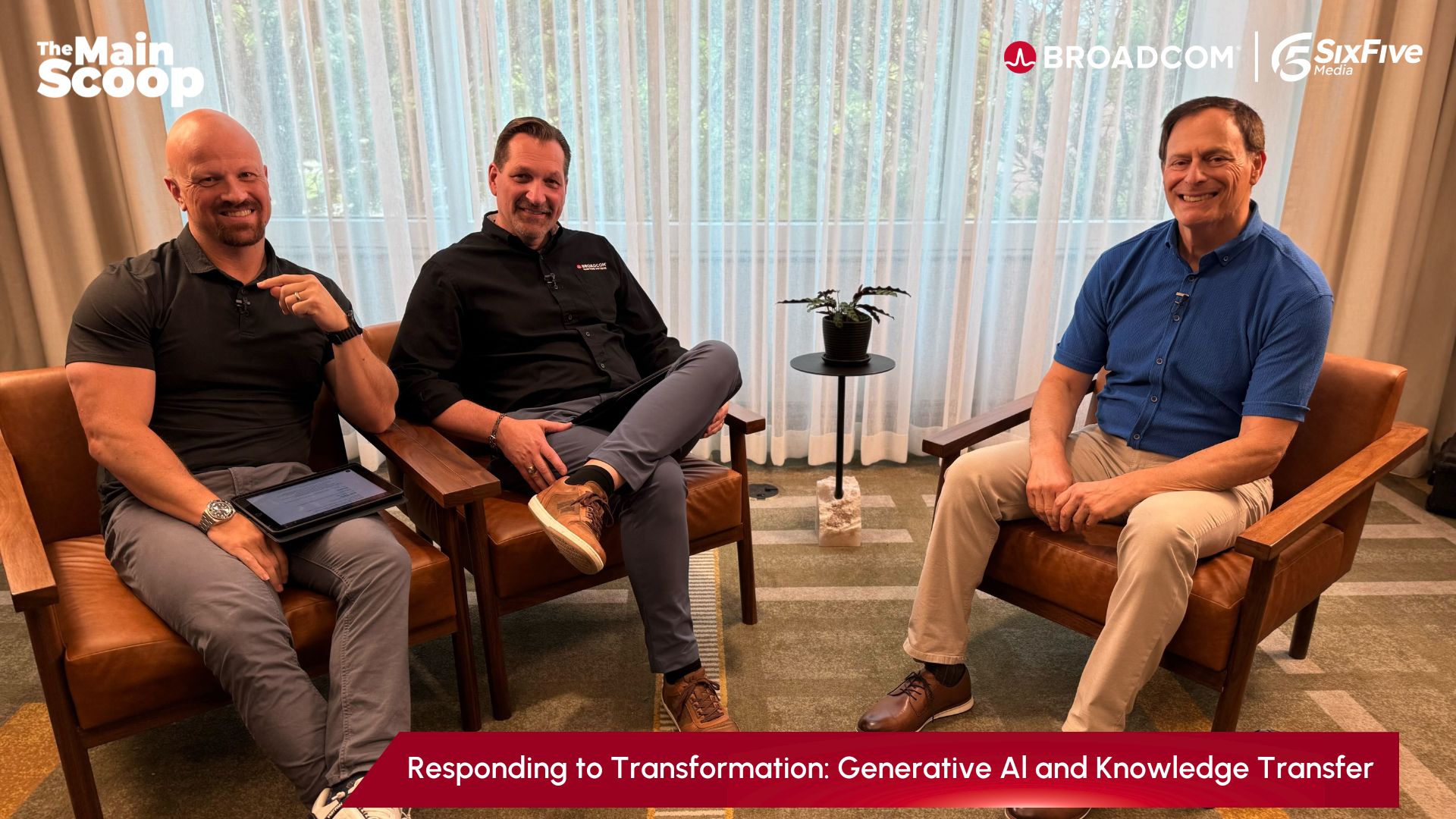Home
No More Tapes! How Hybrid Cloud Storage Ensures Compliance, Resilience, and Immutable Data Protection for Mainframe Environments
No More Tapes! How Hybrid Cloud Storage Ensures Compliance, Resilience, and Immutable Data Protection for Mainframe Environments
Tomer Zelberzvig and Mikhael Liberman from BMC Software join Mitch Ashley to share insights on the shift from tape to hybrid cloud storage in mainframe environments, ensuring compliance and immutable data protection.
Still relying on tape storage for your mainframe? Probably time for an upgrade. Our host Mitch Ashley is joined by Sr. Product Manager Tomer Zelberzvig, and Sr. Principal Solutions Engineer Mikhael Liberman, from BMC Software to explore the world of modern storage solutions for mainframe environments.
Key takeaways include:
🔹The limitations of tape storage are hindering mainframe modernization. Tape is expensive, inflexible, and presents challenges for security, scalability, and data accessibility.
🔹Cloud object storage offers a compelling alternative to tape: Cost-effectiveness, scalability, enhanced security & compliance features (essential for regulations like DORA), and the ability to leverage data for analytics and AI.
🔹Start with a hybrid approach: Organizations can gradually move data and applications to the cloud as they gain comfort and experience.
🔹How BMC AMI Cloud simplifies the transition from tape to cloud: By allowing applications to seamlessly write to cloud object storage as if it were tape, easing the modernization process and removing complexity. Learn more at BMC Software. Watch the video above, and be sure to subscribe to our YouTube channel, so you never miss an episode.
Mitch Ashley:
Welcome to this special episode of Six Five on the Road. We are here in Washington D.C. at the Gaylord Resort and enjoying a little bit of time at the Old Hickory restaurant. I’m joined by a couple gentlemen. We’re having a really fascinating conversation about tape. And believe it or not, we need to move off tape for lots of good reasons. But before we kind of get into that, I want to introduce Tomer and also Mikhael. Welcome.
Mitch Ashley:
Good. So we still run tape in many environments, but there’s some real challenges, kind of impetus to move off of tape, not just to modernize, but also there’s other drivers. Talk a little bit about what some of those are. What are the reasons people are moving off tape right now?
Tomer Zelberzvig:
So a lot of customers perceive tape as secondary storage because this is what the usage has been for the past 40 years or so since tape was first introduced. And now that there are not a lot of variety of vendors that actually create those tape solutions out there, they’re like the last four major companies that provide that. And customers no longer have the power to choose from different vendors. And that affects obviously the price that they need to pay to each vendor. And they’re limited to the technology because the technology kind of siloed the data and you can no longer do something with the data when it’s siloed. And with that came about is object storage came here to resolve that issue and allow customers to actually transition from one secondary storage technology to a new one that is more open to the world. It’s cloud based, it’s more scalable, it allows them to actually do something with the data once it’s there. And customers are now trying to see the different sides of it and understand and comprehend the fact that the data is no longer on tape but on a different technology. And what they can gain from it because they can gain more scalability, especially if they go cloud. They can use the pay as you go and grow as you need model in the cloud. They can enhance their security and compliance needs, whether it’s because of regulation like in Europe with Dora, they can leverage cloud object storage for that because they can leverage object locking capabilities. Which allows them to actually store data in immutable, immutable fashion, which then means that the data could not be tempered even when a cyber attack or a cyber event happens. And they could also leverage the data like the data could be then leveraged by an ELT process to be later loaded into a data lake to be consumed and actually affect business decisions.
Mitch Ashley:
Mikhael, talk a little bit. You mentioned Tomer about regulatory frameworks. Obviously a lot of discussion around Dora and NIST2 and things like that. NIST in Europe, that is a driver for moving off of tape as well, because there’s security concerns, privacy concerns, compliance reporting around that. Talk about that.
Mikhael Liberman:
So we do see a lot of customers in the finance vectors and the insurance vectors that are looking into complying with new regulations. So Dora for example, in the EU is, well, not relatively new. It’s actually been there for a few years and we see organizations looking for ways to create another copy of their data into different locations, not necessarily in their data centers. So object storage would be one of the best solutions because with object storage you can actually create the data in a different location. And again we see more and more customers looking into that, looking into flexibility, scalability of object storage where keeping their third copy of the data Tomer mentioned air gapped, that’s another functionality or another requirement by dora allows you to recover the data without it being tampered. So, we do see quite a lot of interest in object storage and any cloud.
Mitch Ashley:
Talk a little bit about what that transition looks like. Just what does it take to move from tape to the cloud?
Tomer Zelberzvig:
So it’s a journey. First of all, not all customers feel comfortable on the get go to actually move everything. So they start with taking an additional backup and they start to understand how this works and they get more comfortable with the fact that the technology works because they don’t know that object storage has been there since the late 1990s, but it’s been there a minute. It’s not old as tape infrastructure, but it’s still there for a while now and they can trust it, it’s reliable, it’s secure. And so they take that first step into the cloud journey and once they get the hang of it and understand how it works, they start to replace their old traditional ways of doing data management, backup archive and stuff like that. They move that off to cloud as well. And once that’s done, basically not a lot is left on tape. Most of it on tape currently is backups, but you still have other stuff that writes other applications writing to tape. Right? And you need to mitigate this as well. Well, and with BMC Cloud, we just released around two months ago, a new version of cloud data set that allows those applications to seamlessly write to cloud object Storage as if it was tape. So the application is not aware under the covers that there is no tape but only cloud object storage. So they can now mitigate this need that customers have. Like writing their auditing information like SMF logs and ZOS. They can write it directly to cloud object storage, whether it’s DB2 backups that are still written to tape that could be offloaded to cloud object storage as well. And that actually is the last step for customers to actually, I want to say retire the VTL and move off to a new technology that is more scalable and will allow them to do everything that they did with tape but just with a new technology.
Mitch Ashley:
Mikhael, talk about those are the process and the capabilities of what you have. What are the benefits to the business? I mean resilience is a big focus now.It’s not just about maintaining uptime and stability.
Mikhael Liberman:
Resiliency. So I talked to some customers and they sometimes have a few concerns about a big bang migration. So you stop one thing and you start the other. You stop the existing legacy tape management system. You bring up cloud. It’s a journey as Tomer mentioned. Right. It takes time. We are working with the customers, we provide them all the support they need. And I think from feedback we get for many customers it’s actually enjoyable because they learn new technology, they learn a new product and the results they get are much better when we compare it to legacy.
Tomer Zelberzvig:
And it’s important to know that they’re not just moving off from one technology to another. We’re trying to remove the layer of complexity that tape management is adding to the layer of tape solutions. And we are not trying to manage those tapes and that layer has been removed and they no longer need to do all that complex tape related maintenance that needs to happen every once in a while. Like they don’t need to do any reorg or resetting the tape that will mitigate the issues that they have. So they will manage the tapes more correctly. Like we’re trying to do it differently and we’re doing it in a way that they manage their data rather than managing the hub or managing their tapes.
Mitch Ashley:
You need to worry about how many writes have we done to this cartridge, you know, the off site storage of them. You don’t need rotation, all of that.
Tomer Zelberzvig:
Yeah, you don’t need to stack, stack anything on a single tape. You can spread it out now and it will be more efficient and you don’t need to do that now, especially with new hires in the mainframe world. Skill gaps are a big thing, and this will allow us to remove another layer of complexity that’s been there for a while.
Mitch Ashley:
Great. I feel like we just scratched the surface, no pun intended, (to scratching tape), of what we can do in the clouds. Tomer and Mikhael, very pleasant talking with you and thanks for sharing this journey, moving off tape and moving to a much more, I think, capable environment in the cloud. Thank you for listening in on our Six Five On The Road discussion today. We’d love it if you would hit the subscribe button. Also, feel free to check us out on social media and go to SixFiveMedia.com for tons of videos, lots of great discussions just like this one. We look forward to seeing you again.
MORE VIDEOS
.jpg)
The Six Five Pod | EP 267: Grok 4, Galaxy Folds, AI Ethics, and Frothy Markets
On episode 267 of The Six Five Pod, hosts Patrick Moorhead and Daniel Newman dive into the latest tech trends and market dynamics. They discuss Samsung's Galaxy Unpacked event, highlighting innovations in foldable phones and smartwatches. The hosts debate the pace of AI development, with Patrick urging caution while Daniel advocates for rapid progress. They analyze the talent war in AI, noting Meta's aggressive hiring strategies. The conversation shifts to market trends, examining the frothy valuations of tech stocks and drawing parallels to the dot-com era.
Other Categories
CYBERSECURITY

Threat Intelligence: Insights on Cybersecurity from Secureworks
Alex Rose from Secureworks joins Shira Rubinoff on the Cybersphere to share his insights on the critical role of threat intelligence in modern cybersecurity efforts, underscoring the importance of proactive, intelligence-driven defense mechanisms.
QUANTUM

Quantum in Action: Insights and Applications with Matt Kinsella
Quantum is no longer a technology of the future; the quantum opportunity is here now. During this keynote conversation, Infleqtion CEO, Matt Kinsella will explore the latest quantum developments and how organizations can best leverage quantum to their advantage.

Accelerating Breakthrough Quantum Applications with Neutral Atoms
Our planet needs major breakthroughs for a more sustainable future and quantum computing promises to provide a path to new solutions in a variety of industry segments. This talk will explore what it takes for quantum computers to be able to solve these significant computational challenges, and will show that the timeline to addressing valuable applications may be sooner than previously thought.






